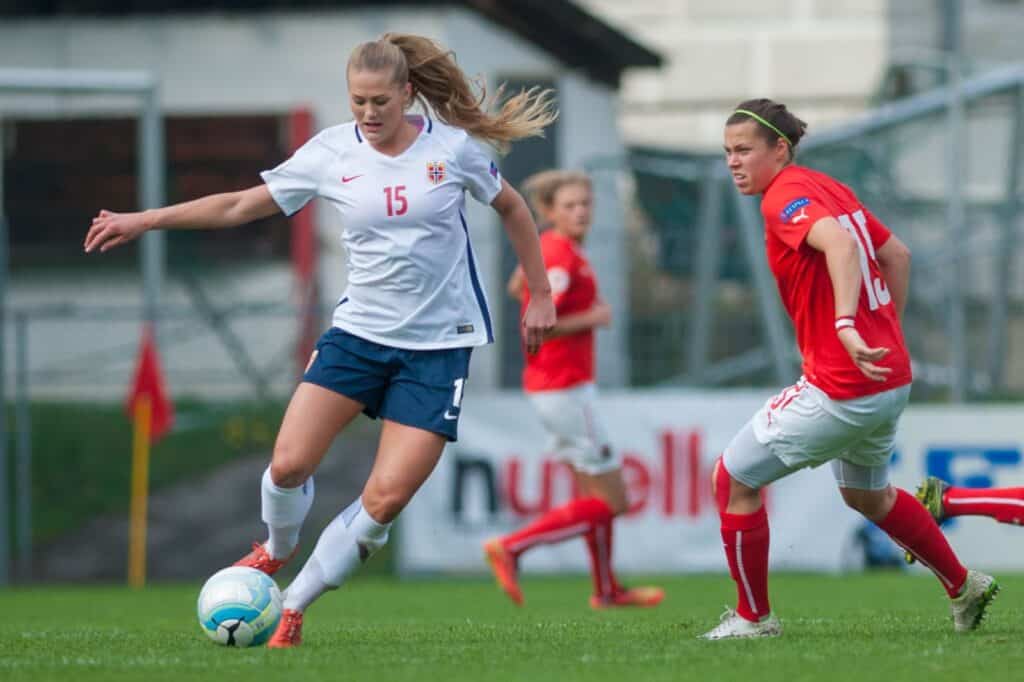Photo by Flickr 2.0
Football has long been the most played sport on earth, with the popularity and exposure of the sport continuing to develop – regardless of the socio-economic factors at play.
Through Africa, the Americas and Europe, football remains part of the social fabric, yet the predominance of the professional game over the past few decades has been played solely by men.
The role of societal norms cannot be underestimated when looking at the differences between men’s and women’s football, with women worldwide simply not presented with the same opportunities as men, particularly in a sporting context.
However, women’s football as a standalone sport, is doing a fantastic job at making up for lost time and the game is booming, with participation numbers and investment levels across the history of women’s football at an all-time high.
In addition, the biggest and best betting sites for football markets are fully in-tune with the development of women’s football and there appears to be no ceiling for the sport currently.
Growth and development are the buzz words around women’s football currently and creating a sustainable and appealing female footballing landscape is the key objective for all involved in the game.
The rise of women’s football has been exponential in recent times. Here is a look at some of the key milestones in enabling the game to get to where it is today and a potential glimpse into the future of the game:
Copa 71
Over the past couple of generations, women’s football has been regarded as a new sport but in 1971, the inaugural hosting of the women’s football World Cup took place in Mexico.
Without the backing of the famously misogynistic FIFA, the World Cup wasn’t afforded the grandeur of the male equivalent but attendances at the tournament were excellent.
Over 100,000 people attended the final at the Azteca, with Denmark defeating hosts Mexico in the final and the competition was regarded as an overwhelming success.
Shamefully, players who took part in the event were sanctioned and, in some cases, even banned from participating in football on their return to their home countries.
It took FIFA a further 20 years before they finally backed a Women’s World Cup, with the first official WWC taking place in China in 1991.
International Development
The 1990’s is always seen as a significant decade within the history of football, particularly within the men’s game and that was mirrored in the women’s game too.
As mentioned, the first official FIFA Women’s World Cup was held in China in 1991, with 12 teams taking part and the merger of different nations participating in competition was a springboard for growth within the game.
The USA were the dominant force at the inaugural World Cup, beating Norway in the final and the female game in the United States continued to surge from there.
College football played a huge part in forging some of the most successful women’s teams ever seen, with the likes of China, Germany and Sweden all taking a read from their American counterparts.
By the end of the 1990’s, 16 different countries were competing in the FIFA Women’s World Cup every four years, while competitions in Africa, Europe and South America followed suit.
UEFA launched the Women’s European Championships in 1984, but it finally took hold in the late 1990’s/early 2000’s, the Copa America Femenina was first held in 1991, the same year in which the Women’s African Cup of Nations (WAFCON) began.
Professional Era
As mentioned, the impact of success in the women’s game in sports such as the United States, sent shockwaves through the game.
College soccer became big business in the US, with players signed for their marketing appeal as well as their talents on the pitch, heralding a professional era within women’s football for the first time.
International prospects were flocking to the USA, to participate in the W-league, which fast became a flag bearer for women’s football worldwide.
Plenty of other countries were quick to follow this model and by the mid 2010’s, most professional men’s teams had a female counterpart, which enabled clubs to share branding and sponsorship rights.
In England, the Women’s Super League was launched, with pioneering women’s clubs such as Chelsea, Arsenal and Manchester City all leading the way in revolutionising the sport into the professional era.
Fixtures are now often held in the same grounds as the men’s teams, with attendances booming and awareness of the women’s game is at an all-time high.
Club competition structures are also following suit, with UEFA adopting the Champions League model into the women’s game, once again, creating a pathway for female players to develop within the game.
Future Prospects
Over the past few years, women’s football has boomed significantly, with female players very much household names in the global footballing landscape.
Consequently, there are plenty of prospects who look set to shape the way in which women’s football moves forward in the next few years:
Michelle Agyemang
Arsenal & England
Striker Michelle Agyemang played a huge part in England’s success at Euro 2025, and she looks set to spearhead the Lionesses attack for years to come. She returns to Champions League winners Arsenal in 2025 ready to stake her claim and the teenager has the world at her feet currently.
Vicky Lopez
Barcelona & Spain
Barcelona have been producing some of the most outstanding talents in the women’s game over the past few years and Vicky Lopez is the pick of the bunch. She averages a goal every three games for both club and country since her debut back in 2023 and she carries the hopes of Spanish football moving into the next generation.
Linda Caicedo
Real Madrid & Columbia
Women’s football in Columbia looks to be in a very strong place and they have a future star in Linda Caicedo. Having moved from her homeland to Real Madrid as an 18-year old, Caicedo has quickly staked her claim in the Spanish capital and played a huge part in getting her team to the 2025 Copa America Femenina final.





